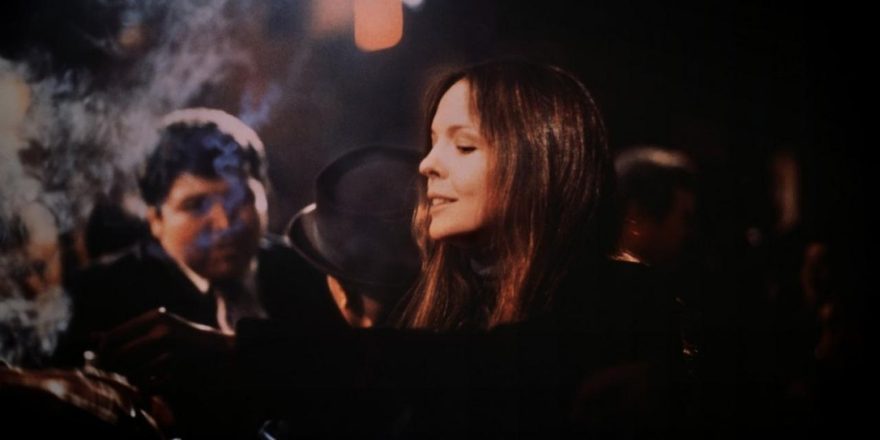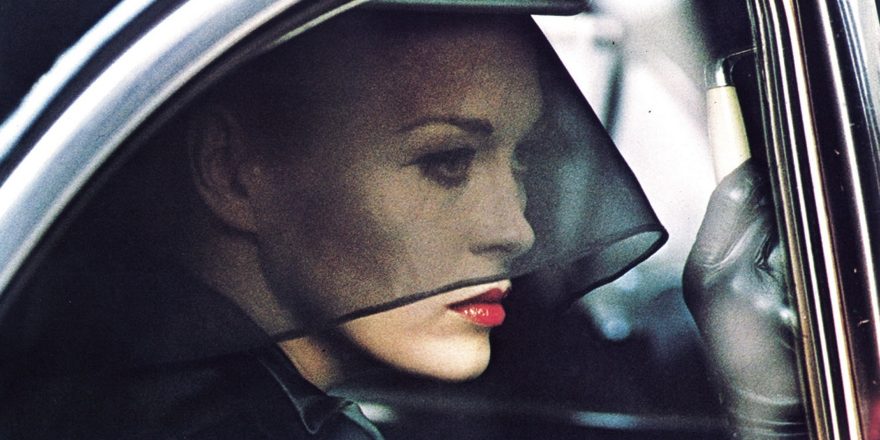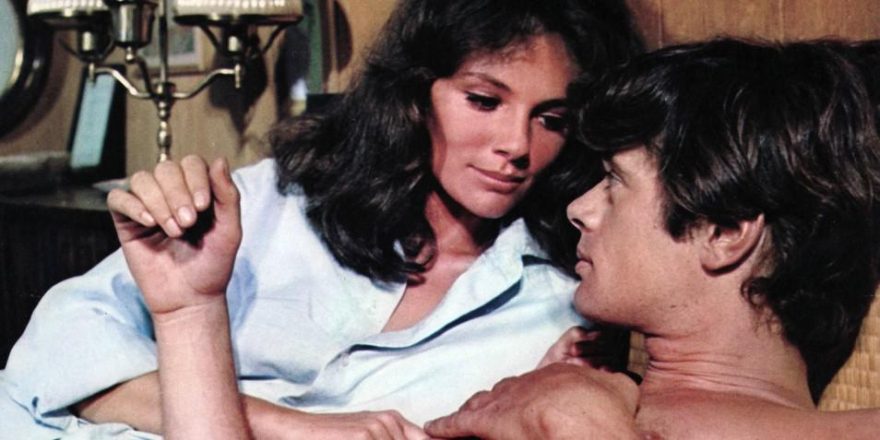One of the film critics that I find most useful is, of all people, Leonard Maltin, the bespectacled, avuncular cinema scribe who has made a mint with his ubiquitous Movie Guide. This shallow, moralistic “critic” can always be relied upon to give many of my favorite movies a “BOMB” rating, or better yet, one-and-a-half stars out of four, the former at least raising his outrage to a certain dramatic pitch, the latter being merely dismissive and condescending. While he has given such arguable masterpieces as Salo, Querelle, The Driver’s Seat and Mandingo the BOMB, he reserves his one-and-a-half star designation for films such as Caligula, Star 80, Cruising, That Cold Day in the Park, von Trier’s The Idiots, Scorsese’s New York, New York, The Brown Bunny, The Killing of a Chinese Bookie and Andrzej Żuławski’s Possession. What most of these films have in common is what Maltin would describe as a “sordid” or “demeaning” representation of sexuality or, more accurately, investigations into morally ambiguous territory within the realms of fetish, sexual obsession and transgression. If Maltin gives it *1/2, you know it has to be good, or at least pretty damned interesting.
Looking for Mr. Goodbar (1977), one of Maltin’s 1.5 star specials, has to be one of the most audacious and fascinating movies of the seventies. Despite (or, more to the point, because of) its Restricted rating, as a teenager I snuck into the movie theater to watch it multiple times, and it rocked my world. It was the first movie poster I put on my bedroom wall (much to my parents’ consternation), spurring my sexual imagination, my budding homosexuality, and my identification with complex, unapologetically sexual female characters in a profound and lasting way. The film has a murky and somewhat mysterious reputation, praised at the time of its release for Diane Keaton’s fearless performance, and doing good box office, but dismissed in some circles (like Maltin’s) as tawdry and exploitative. I eagerly bought it when it was released on VHS, but astonishingly it has never been officially released on DVD or Blu-ray. Some sources attribute this to music rights (the soundtrack is stellar, including classic songs by Donna Summer, Marlene Shaw, Thelma Houston, and many more); others say that Tom Berenger has tried to keep it under wraps (a shame if true, as it’s one of his best performances). Whatever the reason, it’s almost fitting that such a complex and transgressive film has been suppressed.
What strikes me first about rewatching Goodbar (now available on YouTube!) is how practically experimental it is in form and narrative style, especially in comparison to contemporary Hollywood’s slavish capitulation to conventional narrative form and formulaic content. The opening montage of color street shots, including flash-forwards of Keaton in her milieu of porn theaters and seedy bars, is immediately followed by a black-and-white still montage (photos by Kathy Fields, daughter of the film’s producer, Freddie Fields) set to an overture of the soundtrack music, for the opening credit sequence. (Both Goodbar and Cruising, a kind of gay counterpart to Goodbar that came out two years later, had trailers composed of black-and-white still photo montages, something that would be unheard of today.) The director of the film, Richard Brooks, who also adapted the screenplay from Judith Rossner’s pulp novel of the same name, came out of the tradition of classic Hollywood (he directed such seminal films as Cat on a Hot Tin Roof, Elmer Gantry and In Cold Blood), but here he was clearly influenced by the deconstructive and fractured narrative and formal techniques of seventies Hollywood, which was influenced itself by underground and experimental cinema, B-movie chic, and even pornography, a genre that, after the sexual revolution, had a certain forbidden cachet. Goodbar veers between classic technique (rear-screen projection, artificial street sets and lighting – Manhattan as depicted in Goodbar at times almost looks like Kubrick’s studio recreation of it in Eyes Wide Shut) and more modern formal flourishes – location shots, jarring montage, fragmented images, achronological editing, etc. (Brooks’ excessive and highly symbolic use of mirrors in the movie almost gives Altman a run for his money.) The old and new schools of Hollywood clash in Goodbar, with spectacular and disturbing results.
What better actor, then, than Diane Keaton to portray Goodbar‘s main character, Theresa Dunn? (The novel and film are based on the true-life story of Roseann Quinn, a first-grade teacher of deaf children who cruised Manhattan’s dive bars seeking anonymous sexual partners and recreational drugs until she was brutally stabbed to death in her bed in 1973.) Straddling old-school Hollywood glamour as Woody Allen’s main muse and playing Al Pacino’s love interest Kay in The Godfather films (in Goodbar, Theresa reads The Godfather in one of the bars she frequents), Keaton also signified a new kind of female star, independent, liberated, and sexually assertive, wearing men’s clothes and putting her career first in Annie Hall, for example, released the same year as Goodbar. (In several scenes, like the one in which she accidentally drops the phone receiver into the toilet, Keaton actually becomes Annie Hall.) The film is told completely from Theresa’s point of view, showing us her fantasies and desires with dogged subjectivity (Keaton is virtually in every scene in the movie, save for several in which her murderer is introduced).
To say that Goodbar is an obsessive and symbolically overdetermined film would be an understatement: the film compulsively reiterates themes, visual motifs and parallel narratives, a relentless and repetitive reiteration of ideas that lends that film the aspect of a Freudian dream landscape, a baroque, Boschian sequence of fantasies, projections and illusions. (Fantasy sequences often start out as “false narratives,” initially perceived as a progression of the actual narrative, only to be revealed ultimately as merely morbid or sexually transgressive daydreams.) The first third of the film, before Theresa hits the bars in earnest, is slightly more conventional, but still plays with subjective and objective reality. The fractured fantasy motif is introduced when she throws herself in front of a car driven by the self-absorbed college professor who just jilted her (“I can’t stand the company of a woman right after I’ve fucked her,” he says, one of many memorable lines in the film), and then has her breast kissed by the emergency doctor (Brian Dennehy!) who tries to seduce her on the way to the operating table. Theresa gets sexually aroused when she visits her sex-kitten sister, Catherine (a deliciously self-referential Tuesday Weld, garnering her one and only Oscar nomination here) and finds her watching 16mm porn films as part of a swinging foursome. (“You like home movies? Let’s watch the kiddies play,” says Weld’s female companion.) Theresa smokes grass and marvels at the pornographic glass mobile hanging in her sister’s pad. (It later becomes the major symbol of her own pornographic imagination.) She moves into the dingy basement apartment below her sister, and begins practicing sign language in the bathroom mirror, then masturbating with a pillow. Her life begins its ceaseless tide between day and night, light and dark, respectability and licentiousness, morality and immorality: first-grade teacher for the deaf by day, with her hair pulled back and wearing glasses; unbridled, hedonistic adventuress by night, letting her hair down, sans glasses. As her future lover and cokehead gigolo, Tony (Richard Gere), will succinctly put it, “Teacher of little kids cruising crummy bars. Jesus Christ, no wonder this country’s all screwed up!”
But the film is not judgmental of Theresa’s sexual voraciousness and pursuit of altered states or reality. Quite the contrary, it celebrates her libidinous drive and portrays her as happy and content with her life, except on the occasions when it starts to interfere with her day job. This has a lot to do with Keaton’s startling, orgasmic performance. For the only actor who refused to disrobe in the original Broadway production of Hair, Keaton certainly rises to the occasion here. Showing her breasts unselfconsciously, lifting up her skirt to expose her ass after she straddles her professor lover, she gives a performance of rare sexual frankness and sensuality. When the film really kicks in, following Theresa to a variety of smoky, crowded bars, scoring coke and dancing with the multicultural clientele, you get a genuine sense of the character’s carnal exuberance and exhilaration. (Novelist Rossner was reputedly not happy with this sanguine representation of Theresa’s sexual liberation.) All this is set in counterpoint to her strict Irish Catholic family life, with her father (Richard Kiley) constantly judging and berating her, the only part of the movie that tends to fall into cliché. (Her lower back scar from a congenital disease becomes the main symbol of her family’s dysfunction.) The scene in which she is confronted with an imposing nun in the subway sums it up neatly, although it’s not at all clear whether it’s intended as reality or a fantasy projection of her guilt.
In terms of reflecting the era and all of its sociological and cultural underpinnings, Goodbar is a unique document of the post-sixties sexual revolution, reconfigured as a neo-noir. Theresa Dunn, and Keaton’s interpretation of her, is undeniably feminist – living happily on her own, eschewing marriage, monogamy and reproduction (in one scene she tells a doctor to fix it permanently so she will never have kids). But the film also gently lampoons feminism, as per the scene in which Theresa does isometric exercises to increase her bust size (a trend of the era) while watching Women’s Lib protest footage on TV. Theresa’s idea of feminism is much more daring and politically incorrect than the traditional Second Wave: she fantasizes about being a hooker turning tricks on the street early on in the film, and later she is amused when she starts to inadvertently get paid by one-night-stands who mistake her for a prostitute. She makes no judgment when Catherine tells her she’s found a good “safecracker” (abortionist), and she takes full control of her own reproductive destiny to the point of rejecting it altogether. Quinn, the real-life Theresa, was murdered less than 10 years after IUDs and oral contraceptives became popular, which changed the course of female sexuality forever. New York City was also a completely different animal in the seventies, with an estimated 40,000 prostitutes working, three times as many murders as today, and a very high incidence of crack and heroin use. (Quinn’s apartment was only a couple of blocks from the infamous Needle Park, a shooting locale for junkies immortalized in Jerry Schatzberg’s 1972 The Panic in Needle Park, starring Al Pacino.) The scenes in which Theresa smokes grass and snorts cocaine are shot in a hazy, romantic style, capturing the sensuousness and pleasurableness of the drugs that makes them so popular in the first place. In one extraordinary scene, when Theresa is about to try cocaine for the first time, she asks Tony the Gigolo what it does to you. “It makes America beautiful,” he replies.
Although the film is undoubtedly weighed more toward a celebration of female sexuality and hedonism, inevitably Theresa’s pursuit of pure pleasure catches up to her, as it must in all Hollywood movies. However, the film doesn’t particularly moralize about her lifestyle, but rather presents an explanation for the forces that ultimately destroy her: the impotence, sexual repression, and, more to the point, homosexual repression of her male lovers. The film presents three main male figures in Theresa’s life: James (the great William Atherton), the good Catholic boy and welfare worker favored by her father who helps her get a hearing aid for a poor black deaf girl in her class; Tony (early vintage Richard Gere), the coke-fueled American gigolo with a mother complex; and Gary (a very sexualized Tom Berenger), the repressed homosexual hustler who ultimately murders her. Each one is presented as her potential killer, their psychoses developed in parallel narrative threads.
James, acting as a surrogate for her father, represents the ideals of family and normalcy, and yet he is also portrayed as having, like her father, a violent temper (in one scene he tears down her pornographic glass mobile in a rage): an impotent, sexually repressed monster of sorts. In order to get her into bed, he tells her a made-up story about how as a child he witnessed his mother humiliating his father for not being able to get it up, and him beating her for it, which is followed by the extraordinary scene in which Theresa, when she discovers he’s wearing a condom, laughs hysterically and blows it up like a balloon, asking, “Is this supposed to protect you or me?” She humiliates and rejects him for his conventional sexuality, resulting in him becoming her stalker. He finally confronts her with the traditional, moral point of view: “What’s here when you come home? Anything that means anything to you? Family, a dog, a cat? Friends? Do you have one woman friend you can talk to? Last election did you even fucking vote?” James’ reinforcement of the status quo and his likeness to her father repulses her. You can easily imagine that he could kill her for it, especially when she suggests that perhaps he isn’t even really into women sexually at all.
Richard Gere, as the hustler Vietnam war vet Tony, gives one of the most electric performances of the seventies, in the role that probably made him a star. Theresa meets Tony when she witnesses him trying to steal money from a purse on the bar (later Theresa herself starts to shoplift as part of her own rebellion), and subsequently takes him home for a one-nighter. In the scene that blew my mind when I saw the film as a teenager, Gere, wearing nothing but an open blue shirt and white jock strap, chugs from a bottle of champagne and does pushups, his muscular ass clearly visible. Then, clad only in the jock, he does a frenetic dance in the dark with a green fluorescent switchblade, which ends with him mock-stabbing Theresa, one of many foreshadowings in the film of her grisly demise. Later in the film, after Theresa rejects him, he simulates a premature ejaculation with a bottle of beer, symbolizing his sexual shortcomings. “You and my mother: the two biggest cunts in the world,” he tells her, his mother complex also suggesting sexual impotence. In another mind-blowing scene, Catherine rushes into Theresa’s apartment on New Year’s Eve with a masked companion who stabs her with a fake knife. “Your thing is limp,” says her sister, to which the man replies, “Story of my life.” Theresa also accuses another random trick of being queer after he takes her to a gay bar. “Me, queer?” he says. “Jesus, I’m a married man. I have two kids and a very expensive mistress!” All the men in Goodbar are putting up a front of being a prime specimen of heterosexual normalcy, a façade that Theresa sees through like a seer. (In Greek mythology, Theresa is the blind seer who warns Narcissus of his ultimate demise.)
As in the real-life story, Theresa is ultimately murdered by a gay male who is wracked with guilt and in denial about his homosexuality. Whether consciously or not, Tom Berenger plays the sexy murderer as a cross between Rocky in the Rocky Horror Picture Show and Helmut Berger in The Damned. In the scene in which he is bashed by a group of homophobes (that hop out of a hearse!) on New Year’s Eve, he violently careens around in a jock strap, blond wig and feather boa, blaming his sugar daddy for turning him into a faggot. When Theresa picks him up at a bar (she intends him to be her last trick, giving up her wicked ways as a New Year’s resolution), she doesn’t realize that he’s an ex-con with a violent temper, and a self-loathing homosexual. (“In my neighborhood,” he tells her, “if you didn’t fight, you were a fruit. In prison, if you didn’t fight, you spread ass!”) Like Narcissus, Theresa has finally found her Nemesis. (The film is full of double imagery, from the Dorian Grey drawing of herself that appears on her wall, to the constant mirror imagery, to the various dopplegangers that faux-stab her throughout the movie.) This time, when her love object can’t get it up and starts to masturbate furiously, she tells him he doesn’t have to prove anything. The consequences are fatal. “Prove? Prove what? I don’t got to prove nothing to you. You think I’m a flaming faggot!” What follows is one of the most harrowing, dark and disturbing rape/murder scenes ever to appear in a mainstream movie. In his rage, Gary inadvertently knocks over the strobe light that James had given her as a birthday present, turning the horrible act into a lurid, cinematic spectacle. (The symbolism couldn’t be thicker: earlier James had told Theresa he bought her the strobe because it reminded him of her: light and dark, on and off, now I see you, now I don’t.) In a gruesome display of the return of the repressed, he violently rapes her while plunging the phallic knife repeatedly into her chest. No matter how many times I watch the film, this visceral scene moves me to tears. Theresa, who has been portrayed as the strong, intelligent, liberated woman, has her light brutally extinguished by the forces of sexual repression that mangle and destroy the male egos of her lovers. It’s not so much a cautionary tale against female promiscuity and hedonism, but rather one against those who deny their own desires and project their rage and frustration onto the Other.






